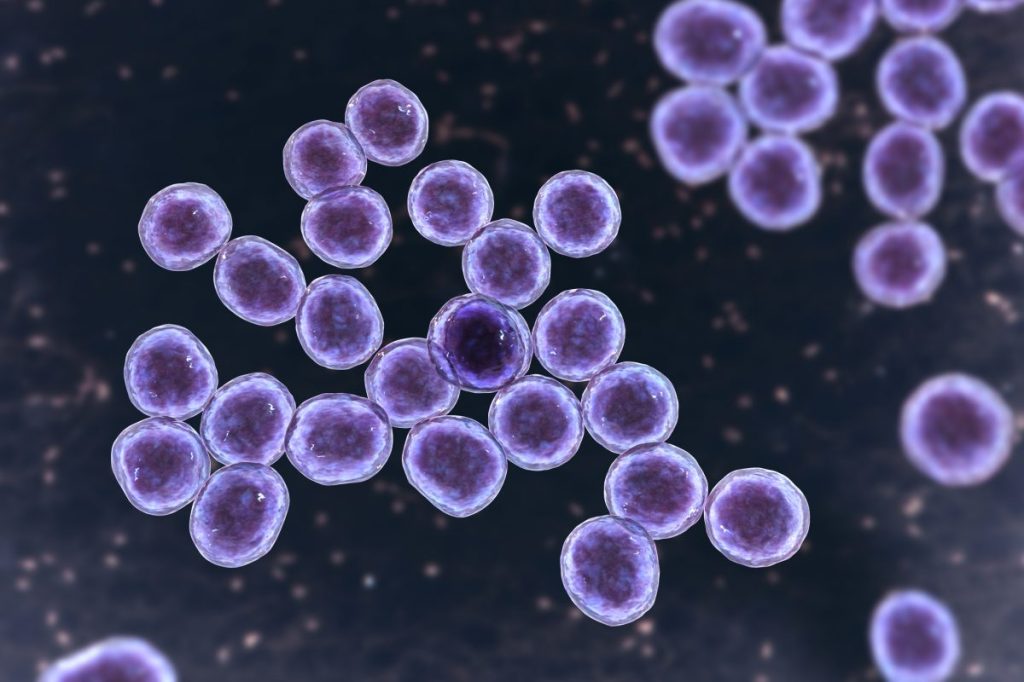MRSA, or methicillin-resistant Staphylococcus aureus, is a so-called “superbug” that is resistant to many forms of antibiotics and can be fatal for infected dogs. Unlike normal staph infections that are easily treated, MRSA is deadly and requires expensive antibiotics and aggressive treatment.
If you see the signs of a staph infection in your dog that doesn’t heal with antibiotics, consult your vet for a diagnosis and treatment right away. Here’s what you should know about the symptoms, causes, and treatments for MRSA infection in dogs.
Symptoms of MRSA infection in dogs
The symptoms of MRSA infection in dogs are similar to a normal staph infection, but they do not disappear with antibiotic treatment and continue to worsen. Infections can appear anywhere on the skin, but often affect the ears and sites of wounds, especially after surgery.
If your dog’s staph infection is not clearing up with treatment, MRSA may be the cause. Here are some symptoms you should look out for:
- Small, red bumps or boils
- Bulls-eye shaped lesions
- Itchiness
- Skin ulcers
- Pus-filled blisters
- Scaling skin
- Discoloration of the skin
- Alopecia
- Pneumonia
- Sepsis
Causes of MRSA infection in dogs
MRSA can pass from dogs to humans or from humans to dogs. It’s carried in the nasal cavity and can infect other parts of the body. The bacteria then enters the bloodstream, where it becomes deadly.
The bacteria can also pass into the environment, such as boarding facilities and veterinary offices, and infect other hosts through direct contact or contact with contaminated objects. Dogs in high-risk settings, such as therapy or service animals visiting hospitals, rehab centers, or nursing homes, can be especially vulnerable. Additionally, healthcare workers who may be more likely to be exposed to the bacteria can also directly pass MRSA to their dogs if they pick it up from somewhere. This can especially happen when people don’t wash their hands properly.
Improper antibiotic use has contributed to the rise of antibiotic-resistant strains of MRSA, making infections more difficult to treat. Many vets now recommend treating minor, non-life-threatening infections with bathing, immune-boosting foods and supplements, and other holistic treatments to avoid overuse of antibiotics, which causes bacteria like MRSA to exist.
Treatments for MRSA infection in dogs
MRSA infections in dogs are often treated with expensive antibiotics that aren’t usually found in a normal veterinary clinic. Most MRSA medications are for humans, and they are often saved to treat life-threatening infections in people rather than skin infections in dogs. Vets may additionally prescribe topical shampoos.
During the time of infection, dogs should remain quarantined in a clean environment. All toys, blankets, and items the dog comes into contact with should get thorough and regular washing. Infected dogs may be given probiotics, as antibiotics kill off both good and bad bacteria, and probiotics encourage good bacteria to replace those that have been killed off. Herbal remedies, supplements, and dietary changes can help boost the immune system and the dog’s ability to fight off the infection naturally. Dog parents should not, however, use these treatments without vet supervision.
MRSA can be very deadly, and many dogs do not recover. Treatment is more effective when it begins early, so if you see the signs of a staph infection in your dog, get to your vet for a proper diagnosis.
Proper grooming, maintaining a clean environment, disinfecting wounds, and giving your dog an immune-boosting diet can all go a long way in preventing infection.










